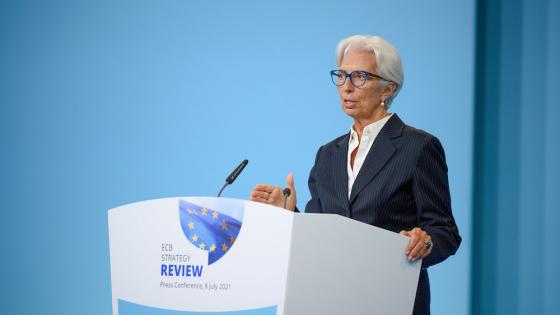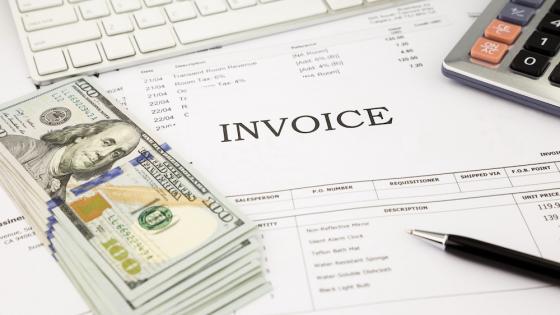Many central banks have adopted a common policy – an inflation target near 2%. These central banks include the Fed (which calls it a ‘long run goal’), the ECB (which targets inflation ‘below, but close to 2%’) and the central banks of most other advanced economies.
A number of economists, such as Blanchard et al. (2010), have suggested a higher inflation target – typically 4%. Yet this idea is anathema to central bankers. According to Ben Bernanke (2010a), the Federal Open Market Committee unanimously opposes an increase in its inflation goal, which ‘would likely entail much greater costs than benefits’.
I examine the case for a 4% inflation target in a recent essay (Ball 2013) and reach the opposite conclusions to those of Chairman Bernanke:
- A 4% target would ease the constraints on monetary policy arising from the zero bound on interest rates, with the result that economic downturns would be less severe.
- This important benefit would come at minimal cost, because 4% inflation does not harm an economy significantly.
A lesson from the Great Recession
Recent history has demonstrated the problem of the zero bound. In response to the US financial crisis and recession, the Fed reduced its target for the federal funds rate from 5.25% in August 2007 to a range of 0 to 0.25% in December 2008. The target remains in that range today. Yet this sharp monetary easing has not restored full employment. The unemployment rate peaked at 10% in 2009 and then stayed high; in April 2013, it was 7.6%. Unemployment of 5% – widely considered the natural rate just a few years ago – is nowhere in sight.
During past recessions, the Fed has reduced interest rates and kept reducing them until unemployment fell to an acceptable level. But cutting interest rates has not been feasible since 2008. With nominal rates already near zero, they cannot fall farther. Nobody would lend at a negative interest rate because one can do better by holding cash.
As the US recession spread around the world, many other central banks reduced interest rates to 1% or less. Like the US, their economies are stuck in the ‘liquidity trap’ described by Keynes (1936). Unemployment is high and policymakers cannot reduce it with interest-rate cuts.
In general, a higher inflation target reduces the zero-bound problem. In long run equilibrium, a higher inflation rate implies that nominal-interest rates are also higher – the Fisher effect. When a recession occurs, rates can fall by more before hitting zero, making it more likely that policymakers can restore full employment.
Suppose that central banks had been targeting 4% inflation in the early 2000s rather than 2%. Nominal-interest rates would have been two percentage points higher, allowing rates to fall by an extra two points before hitting zero. I estimate that this extra stimulus would have reduced average unemployment over 2010-2013 by two percentage points (Ball 2013).
Future risks from the zero bound
Looking forward, the case for a higher inflation target depends on the risk that interest rates will hit zero in future recessions. Some economists believe that this risk is low. Mishkin (2011), for example, argues:
“Although [the zero bound] has surely been a major problem in this recent episode, it must be remembered that episodes like this do not come very often. Indeed, we have not experienced a negative shock to the economy of this magnitude for over seventy years. If shocks of this magnitude are rare, then the benefits to a higher inflation target will not be very large because the benefits will only be available infrequently.”
In my view, Mishkin understates the risk of the zero bound. If we look beyond the US, the crisis of 2007-2009 is not unique in recent history. A completely separate financial crisis pushed Japanese interest rates to zero in 1997. It was only around 1990 that central banks began to target inflation rates of 2% or less. The two largest economies that adopted this policy both hit the zero bound within 20 years.
More generally, history suggests that the zero bound is dangerous if central banks target 2% inflation. In my paper, I make this point by examining the eight US recessions since 1960.
We can divide these recessions into two groups:
- First, recessions with low initial inflation.
Three of the eight recessions began with inflation rates between two and three percent. These episodes provide the most direct evidence on the zero-bound problem at low inflation rates. One of the three is the Great Recession of 2008-09, when the zero bound constrained monetary policy severely. Based on the Taylor rule that fits policy before 2008, Rudebusch (2009) finds that the optimal federal funds rate, ignoring the zero bound, fell to -5% in 2009.
The other two recessions that began with 2-3% inflation are the first one in the sample, which occurred in 1960-61, and the last one before the Great Recession, in 2001. These two recessions were milder than most: their peak levels of unemployment were only 7.1% and 6.3%. In both cases, the federal funds rate did not hit zero, but it came close. The funds rate fell to 1.2% following the 1960-61 recession and 1.0% following the 2001 recession.
We have seen that, with low inflation, a severe recession reduces the optimal federal funds rate to -5% and mild recessions reduce it to about +1%. Comparing these cases, it seems likely that a recession of average severity would push the optimal rate below zero.
- Second, recessions with high initial inflation.
In five of the eight recessions since 1960, inflation began above 4%. With high inflation, nominal-interest rates were also high, so the Fed could cut them sharply without approaching zero. But what would have happened if inflation had started at 2%?
We can get an idea by examining real interest rates. If the nominal-interest rate, i, cannot fall below zero, then the real rate, r=i-π , cannot fall below -π . One way to interpret the danger of low inflation is that it raises the lower bound on the real interest rate.
If inflation is 2% when a recession begins, the bound on the real rate is -2% at that point. However, the recession is likely to push inflation down somewhat. In the three recessions that actually started with 2-3% inflation, the inflation rate fell to about 1% before the economy recovered. History suggests, therefore, that initial inflation of 2% will produce a bound of -1% on the real interest rate.
For the recessions that started with inflation above 4%, we can gauge the relevance of a real-interest-rate bound by examining the lowest value reached by the real rate during the recession and subsequent recovery. In two of the five cases – the recessions of 1973-75 and 1980 – the real rate fell below -4%. In these episodes, a lower bound of -1% would have severely distorted monetary policy. For the recession of 1969-70, the real rate fell to a minimum of -2.3%. For the recession of 1990-91, the minimum was -0.6%; this episode would have been a near-miss with a lower bound of -1%. Only in one case, the recession of 1981-82, was the minimum real rate above zero.
To summarise, history suggests that, with a 2% inflation target, the lower bound on interest rates is likely to bind in a large fraction of recessions.
Opposition to higher inflation
Would 4% inflation hurt the economy? Economists have suggested various costs of inflation, such as variability in relative prices and distortions of the tax system. But research has not shown that these effects are quantitatively important for moderate inflation. As Krugman (1997) puts it: “one of the dirty little secrets of economic analysis is that even though inflation is universally regarded as a terrible scourge, efforts to measure its costs come up with embarrassingly small numbers”.
Some central bankers acknowledge that 4% inflation does not greatly harm the economy. Nonetheless, they oppose adoption of a 4% target because they think this action may actually cause inflation to rise above 4%, or at least create expectations of that outcome.
Bernanke (2010a), for example, asserts that “inflation would be higher and probably more volatile” with a 4% target and “inflation expectations would also likely become significantly less stable”. According to Bernanke (2010b):
“The Fed, over a long period of time, has established a great deal of credibility in terms of keeping inflation low, around 2%... If we were to go to 4% and say we’re going to 4%, we would risk a lot of that hard-won credibility, because folks would say, well, if we go to 4%, why not go to 6%? It’d be very difficult to tie down expectations at 4%.”
Mishkin (2011) makes a similar argument, asserting that “when inflation rises above the 3% level, it tends to keep on rising”.
The addictive theory of inflation
We might call this view ‘the addictive theory of inflation’. Like an alcoholic’s first drink, 4% inflation may not do great harm by itself, but it is the first step in a dangerous process.
The rationale for this view is not clear. In other contexts, Bernanke and Mishkin argue that a central bank should determine its optimal policy, explain this policy to the public, and carry it out. Why can’t policymakers explain that the zero-bound problem makes 4% inflation desirable, raise inflation to 4%, and keep it there? Mishkin points to the 1960s, when inflation rose to 4% and the Fed let it keep rising, but why must policymakers repeat that mistake?
History does not suggest that it would be “difficult to tie down expectations” if inflation rises modestly. Inflation expectations, as measured by surveys, have generally followed actual inflation with a lag. They followed inflation up during the 1960s and 70s, and after that they followed inflation down. If inflation rises to 4%, it seems unlikely that expectations will overshoot this level.
Conclusion
Since the double-digit inflation of the 1970s, central banks have sought to reduce inflation and keep it low. Recent history teaches us that inflation has fallen too low. Raising inflation targets to 4% would have little cost, and it would make it easier for central banks to end future recessions.
References
Ball, Laurence (2013), “The Case for 4% Inflation”, Central Bank Review (Central Bank of the Republic of Turkey), May.
Bernanke, Ben S (2010a), “The Economic Outlook and Monetary Policy”, Jackson Hole Symposium, 27 August.
Bernanke, Ben S (2010b), “Testimony before the Joint Economic Committee of Congress”, 14 April.
Blanchard, Olivier, Giovanni Dell’Ariccia and Paolo Mauro (2010), “Rethinking Macroeconomic Policy”, IMF Staff Position Note SPN/10/03.
Keynes, John M (1936), The General Theory of Employment, Interest and Money, Macmillan.
Krugman, Paul R (1997), The Age of Diminished Expectations: US Economic Policy in the 1990s, MIT Press.
Mishkin, Frederic S (2011), “Monetary Policy Strategy: Lessons from the Crisis”, NBER Working Paper #16755.
Rudebusch, Glenn D (2009), “The Fed’s Monetary Policy Response to the Current Crisis”, FRBSF Economic Letter 2009-17.


